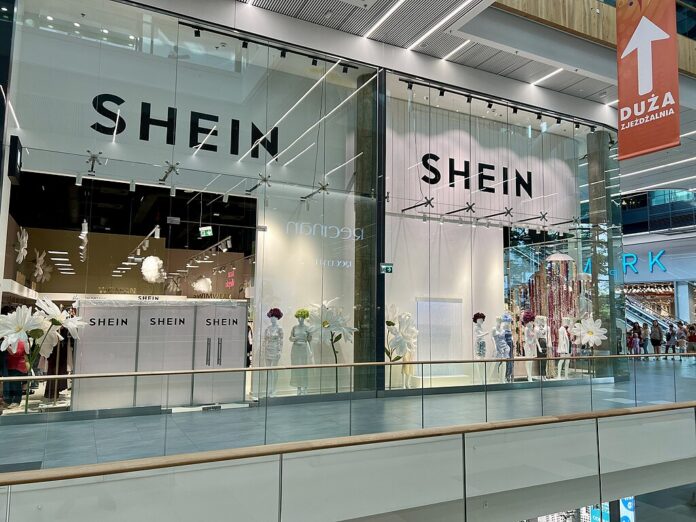How Shein became a global fast fashion giant, overcoming controversies and reshaping the industry
Shein, the Chinese ultra-fast fashion giant, has taken the world by storm, attracting millions of young shoppers with its affordable prices and vast product range. Seventeen-year-old Michaela exemplifies Shein’s customer base, having once spent £150 on over 16 items. The brand’s affordability and influencer partnerships have fueled its popularity, especially among Gen Z.
Founded in 2008 by Xu Yangtian, Shein initially focused on selling wedding dresses online. Over the past decade, it has grown into one of the world’s largest fast fashion retailers, outpacing industry giants like H&M, Primark, and Next in profitability. Last year, Shein doubled its profits to over $2 billion and now ships to customers in 150 countries.
Embed from Getty ImagesDespite its success, Shein faces significant controversy regarding its environmental impact and labor practices. Allegations of forced labor and excessive use of plastic packaging have sparked backlash. Michaela acknowledges these issues but continues to shop at Shein for its convenience and affordability.
Shein’s rise coincided with the pandemic’s online shopping boom and a strategic use of social media. The brand leverages influencers and reality TV stars to promote its products on platforms like TikTok and Instagram. This savvy marketing approach has helped Shein reach a vast audience, particularly through “haul” videos where users review their purchases.
The company’s business model resembles Amazon’s, partnering with thousands of third-party suppliers to produce and ship items quickly. Shein’s “test and repeat” strategy allows it to respond rapidly to fashion trends, turning around new items in just 25 days. This agility sets Shein apart from competitors, enabling it to offer a staggering 600,000 items on its platform at any given time.
Shein’s use of gamification strategies on its app further boosts customer engagement. Users earn points and discounts for daily logins, sharing purchases on social media, and referring friends, encouraging repeat purchases.
However, the firm’s rapid growth has not come without scrutiny. Concerns about environmental sustainability and labour practices have been persistent. Last year, US lawmakers called for an investigation into Shein’s use of Uyghur forced labour. The company denies these allegations, asserting a zero-tolerance policy for forced labour and promising to investigate such claims.
In response to environmental criticism, Shein has launched a resale platform in the US and France to promote sustainability. It also claims that its production in smaller batches minimizes waste. Nonetheless, critics argue these measures are insufficient.
The company’s potential listing on the London Stock Exchange, valuing it at an estimated $50 billion, brings these issues into sharper focus. Some believe the listing could enhance scrutiny and improve Shein’s practices, while others worry it may not adequately address environmental and social governance concerns.
Student Jess Gavin, who once shopped at Shein during the pandemic, has since stopped due to ethical concerns. She now prefers second-hand sites like Vinted and Depop. This shift reflects a growing awareness and responsibility among younger consumers regarding the impact of fast fashion.
As Shein navigates its controversies and potential public listing, it remains a dominant force in the fashion industry. Michaela cautiously supports the idea of Shein making Britain it’s financial home, hoping the company will improve its environmental and labour practices.
Analysis:
Political Impact
Shein’s potential listing on the London Stock Exchange is a significant political event, bringing attention to the economic and regulatory environment in the UK. A successful listing could boost the London Stock Exchange’s appeal, which has struggled to attract fast-growing companies. However, the controversy surrounding Shein’s labour practices may also prompt stricter regulatory scrutiny and legislative measures to ensure compliance with ethical standards.
Social Reflection
Shein’s popularity highlights a broader societal trend towards fast fashion and consumerism driven by affordability and social media influence. It reflects the values and preferences of younger generations, who prioritize trendy and inexpensive clothing. However, it also brings to light the ethical dilemmas associated with mass production and the environmental impact of disposable fashion.
Psychological Aspect
The allure of Shein’s low prices and trendy styles taps into the psychological gratification of instant gratification and social validation. The use of gamification on its app reinforces addictive shopping behaviors, encouraging repeated purchases. This phenomenon underscores the psychological appeal of fast fashion and the challenges consumers face in balancing desire with ethical considerations.
Sociological Angle
Sociologically, Shein’s rise underscores the globalization of fashion and the interconnectedness of supply chains. It highlights issues of labor exploitation and environmental degradation in developing countries, raising questions about the responsibilities of consumers and corporations in a globalized economy. The backlash against Shein also reflects a growing movement towards ethical consumption and corporate accountability.
Fashion Culture
Shein has significantly influenced fashion culture by democratizing access to trendy clothing at affordable prices. It has reshaped consumer expectations, driving demand for rapid turnover of styles and influencing competitors to adopt similar business models. However, this trend also perpetuates a culture of disposability, challenging the fashion industry to balance innovation with sustainability.
